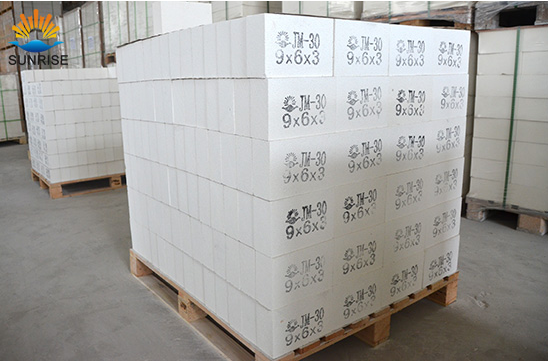Product Search
Quickly find the product you need
Products List
Refractory Knowledge
- Aggregates Used For the Production of Ins
- Classification of mullite insulation bric
- Thermal Shock Resistant Fireproof Heat In
- Pollution and treatment in the production
- Production Process Methods of Refractory
- The Use of Mullite Insulation Bricks
- Pros and cons of lightweight mullite bric
- Manufacturing process of fire clay insula
- the development of the refractory brick i
- Refractory material production process
Products List
- Phone:0086-370-63838939
- Email:sales@sunriserefr.com
- Office Address: No.36 Fengchan Road Of Zhengzhou, Henan, China (Mainland)
The physical Nature of the Refractory Brick
Date:2016-12-21 17:16 | From:Zhengzhou Sunrise Refractory | Author:admin
Structural Nature
Macroscopic organization structure of mullite insulation brick is heterogeneous body composed of solid material and gas hole. Porosity is the important factors influencing the products under
normal temperature and high temperature performance, especially under the condition of high temperature, is products to the outside world of erosion resistance ability is greatly
reduced. Reason of gas hole formation: when products molding, the air in the material is completely ruled out. After material moisture ruled out, leaving space. Raw material calcined is
inadequate, some should decomposition of salt is the complete decomposition, should be burning ingredients to burn completely. The material composition is uneven, when high temperature
firing, contraction is uneven, etc.
1. porosity
The porosity of refractory can be divided into: closed porosity, closed in the products is not connected with the outside world. Open pores, closed at one end and the other end connected with the
outside world, for fluid filling. Cut-through pore, The two sides of the cut-through products, get through for the fluid.
2. Bibulous rate
Bibulous rate is absorbed by all the open pores in the products of water quality and the quality of the dry sample ratio. Because the bibulous rate of determination method is simple, in actual
production often used for identifying the quality of raw material calcined. The raw material calcined is the better, the bibulous rate value is the lower.

3. Bulk density
The definition of bulk density is the ratio of dry weight and total volume of products, also known as a volumetric weight. Volume density intuitively reflects the degree of the density of the products, it
is an important measure indicator of dense refractory products quality. But in the production of lightweight insulation products, in order to reduce the heat capacity and thermal conductivity, people
use various means to reduce the products volume density.
4. True proportion
The quality of dry material and its true volume (not including pore volume) ratio. The true proportion of refractory material, can reflect the material composition of purity or the degree of crystal
structure transition, proportion, etc.
Macroscopic organization structure of mullite insulation brick is heterogeneous body composed of solid material and gas hole. Porosity is the important factors influencing the products under
normal temperature and high temperature performance, especially under the condition of high temperature, is products to the outside world of erosion resistance ability is greatly
reduced. Reason of gas hole formation: when products molding, the air in the material is completely ruled out. After material moisture ruled out, leaving space. Raw material calcined is
inadequate, some should decomposition of salt is the complete decomposition, should be burning ingredients to burn completely. The material composition is uneven, when high temperature
firing, contraction is uneven, etc.
1. porosity
The porosity of refractory can be divided into: closed porosity, closed in the products is not connected with the outside world. Open pores, closed at one end and the other end connected with the
outside world, for fluid filling. Cut-through pore, The two sides of the cut-through products, get through for the fluid.
2. Bibulous rate
Bibulous rate is absorbed by all the open pores in the products of water quality and the quality of the dry sample ratio. Because the bibulous rate of determination method is simple, in actual
production often used for identifying the quality of raw material calcined. The raw material calcined is the better, the bibulous rate value is the lower.

3. Bulk density
The definition of bulk density is the ratio of dry weight and total volume of products, also known as a volumetric weight. Volume density intuitively reflects the degree of the density of the products, it
is an important measure indicator of dense refractory products quality. But in the production of lightweight insulation products, in order to reduce the heat capacity and thermal conductivity, people
use various means to reduce the products volume density.
4. True proportion
The quality of dry material and its true volume (not including pore volume) ratio. The true proportion of refractory material, can reflect the material composition of purity or the degree of crystal
structure transition, proportion, etc.

